|
 REPTILE RESCUE
REPTILE RESCUE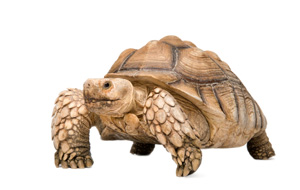 |
|
 |
of
Northeast Florida |
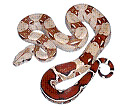 |
|
Home |
Adoptions |
Snake
Identification |
Snake Myths
|
Donations |
Care Sheets |
Questions |
|
 |
Reptile Rescue of Northeast Florida
Bearded Dragon Care Sheet
|
 |
|
 |
General
The inland bearded dragon is generally considered one of the
all-time best lizard pets. It is known for being alert, hardy and tame, and
bearded dragon owners love watching their lizards, whether during a feeding
frenzy while chasing crickets or simply interacting with each other. Bearded
dragons exhibit interesting behaviors, too, such as “arm waving,” in which a
female (and occasionally males) may lift a front leg in the air and “wave”
it as a submissive gesture. The spiny “beard” from which the lizard gets its
common name may also be extended, though it’s uncommon for tame captives to
do so; dragons typically do this when alarmed. |
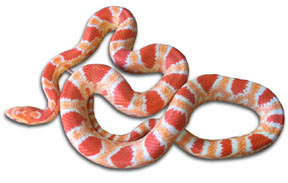 |
|
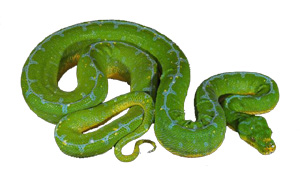 |
Size
Hatchlings measure about 4 inches; large adults can
be nearly 2 feet in length. |
 |
|
 |
Life Span
Average captive lifespan is between six and 10
years, though there are reports of specimens living twice that long. |
 |
|
 |
Caging
While a hatchling dragon could live in a 20-gallon
aquarium for a short time, it will quickly need a larger enclosure. A
55-gallon aquarium or equal-sized enclosure is OK for one or two adult
dragons. Screening should be used for proper ventilation, whether as a top
on an aquarium enclosure or in the construction of a custom enclosure. |
 |
|
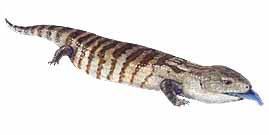 |
During warm weather bearded dragons can be kept in outdoor cages. Be sure
the outdoor enclosure provides both sunny basking areas and shady retreats,
as well as shelter from rain. Having access to the sun outdoors provides
healthy UV.
Bearded dragons like to climb, so some sturdy branches are welcome
in their enclosures. |
 |
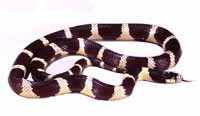 |
Lighting and Temperature
Bearded dragons like it hot. A basking site of about 100
degrees Fahrenheit works well for them. The basking site can be provided by
a spotlight (such as a mercury vapor bulb) positioned over a rock, branch,
etc. at one end of the enclosure. Keeping the spotlight at one end of the
cage will allow your dragon to thermoregulate (move between a cooler end of
the enclosure and the hotter end with the basking area). The cooler end of
the enclosure can be kept at about 80 degrees.
|
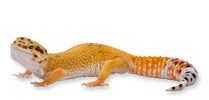 |
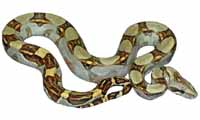 |
In addition to the basking spotlight,
provide full-spectrum UVB (ultraviolet) lighting over the rest of the
enclosure. This lighting is critically important for dragons that are kept
indoors, as it assists them in synthesizing vitamin D3, which aids in
calcium absorption. There are many types of lights available; consult with
store employees and read the packaging to determine the best for your setup.
|
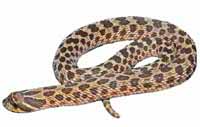 |
|
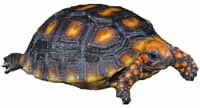 |
Heat can also be provided using heat tape,
heat emitters and other devices available in pet stores. Keep a thermometer
in the enclosure to track the cage temperature. At night, it can go down to
about 65 degrees.
|
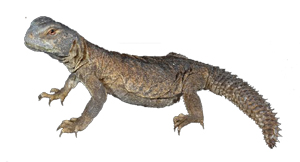 |
|
 |
Substrate
Sand is commonly used with bearded dragons, though there is concern,
especially when keeping young lizards, that intestinal impaction could
result if they accidentally eat some. It is not recommended that you keep
young bearded dragons on sand, or any kind of loose substrate. Newspaper,
paper toweling or reptile carpet (though watch for loose threads or areas
that can snag dragon toenails) would be better choices.
|
 |
|
|
Adult bearded dragons can be kept on these
same substrates. If you must use sand, playground sand (available at
hardware and do-it-yourself stores) is a decent choice due to the fact that
it's not as dusty as other types of sand. You can also purchase digestible
“reptile sand” at reptile and pet stores, though opinions on the safety of
these are varied. If you try some, be sure to follow manufacturer
directions. Sand mixed with clean soil that has not been treated with any
fertilizers, pesticides, etc., can also be used with adult bearded dragons.
|
|
|
|
If you keep your bearded dragons on sand,
reduce the risk of impaction by offering food on a shallow dish rather than
placing it directly on the substrate.
|
|
|
|
Food
Bearded dragons are omnivorous, meaning
they eat both animal and plant matter. They are not usually picky and eat
with gusto.
|
|
|
|
Insects, such as crickets and mealworms, should
be dusted with a vitamin/mineral supplement and calcium. Dusting can be
achieved by placing the insects in a plastic bag with some of the powder,
and shaking the bag to lightly coat the insects prior to offering them to
your lizards.
|
|
|
|
Also offer bearded dragons finely chopped veggies (such as romaine lettuce,
zucchini, carrots, etc.), greens (collard, mustard, dandelion, etc.) and
fruit (kiwi, banana, mango, etc.). Use healthy, vitamin-rich items; sprinkle
the appropriate amount of powdered supplements on these foods, too. Avoid
iceberg lettuce because it is not nutritious.
Bearded dragons will also eat
pinky mice, and a wide variety of nutritionally balanced manufactured diets
are available at pet stores, too.
Again, if you keep your dragons on sand, offer
food on a shallow dish rather than placing it directly on the substrate. |
|
|
|
Water
Mist bearded dragons using a water spray bottle;
they’ll lick water droplets off cage walls, rocks, etc., as well as
themselves. Don’t overdo it; you don’t want their enclosure to get too wet
and become humid. You can also offer water in a shallow dish (such as a jar
lid); be sure to keep this dish and the water in it clean.
|
|
|
|
Handling and Temperament
Bearded dragons are generally quite docile and
will tolerate handling better than other lizard species. This is especially
true of adults that have spent their entire lives in captivity (of course,
there may be exceptions). It’s not unusual to visit a reptile expo and see
fat and happy bearded dragons lounging amid merchandise at vendor tables, or
perched on their owners’ shoulders.
|
|
|
|
|
|
|
|
|
|
|
|
|
|
|
|
|
|
|
|
|
|
|
|
|
|
|
|
To drop off reptiles
email for directions.
email - ReptileRescue1@aol.com
|
|
|
|
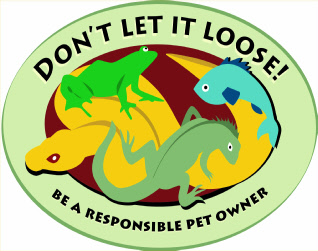 |
|
| |
|
|
| |
|
|
| |
|
|
|
Home |
Adoptions |
Snake
Identification |
Snake Myths
|
Donations |
Care Sheets |
Question |
| |
© Copyright Reptile
Rescue of Northeast Florida 2012 - 2014 |
|
























